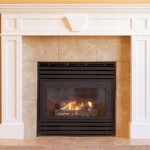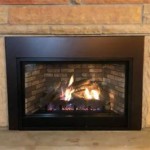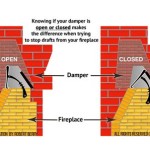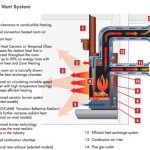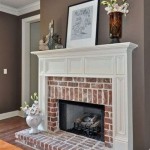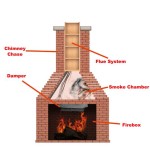Gas Fireplace Blower Fans: An Essential Aspect of Your Fireplace
Gas fireplaces have become increasingly popular due to their convenience, efficiency, and aesthetic appeal. However, to truly optimize the performance and enjoyment of your gas fireplace, it's essential to consider the addition of a blower fan.
What is a Gas Fireplace Blower Fan?
A gas fireplace blower fan is a device installed within the fireplace's firebox or enclosure. It operates using electricity to circulate the warm air generated by the fireplace throughout the room. This process enhances heat distribution, ensuring an even and comfortable temperature in the living space.
Benefits of Using a Gas Fireplace Blower Fan:
**a. Enhanced Heat Distribution:** Blower fans distribute the heat from the fireplace, creating a more consistent and comfortable temperature throughout the room. This eliminates cold spots and ensures an even distribution of warmth.
**b. Improved Fireplace Efficiency:** By circulating the warm air, blower fans reduce heat loss and enhance the overall efficiency of the fireplace. This leads to lower energy consumption and reduced heating costs.
**c. Reduced Emissions:** Improved heat distribution reduces the likelihood of fumes and emissions accumulating in the room. This contributes to a healthier and more comfortable living environment.
**d. Noise Reduction:** Some gas fireplaces can produce noticeable crackling or popping sounds. The sound of the blower fan can effectively mask these noises, creating a more peaceful ambiance.
**e. Versatility:** Blower fans are available in various styles and configurations, allowing you to choose one that complements the design and aesthetics of your fireplace. Many models also offer adjustable speeds, enabling you to control the airflow for optimal comfort.
Types of Gas Fireplace Blower Fans:
There are two primary types of gas fireplace blower fans:
**a. Centrifugal Blowers:** These fans use a rotating impeller to expel air outward from the center. They are characterized by their high airflow capacity and can be installed vertically or horizontally.
**b. Axial Blowers:** Axial blowers have a propeller-like blade that moves air parallel to the axis of rotation. They are typically installed vertically and are known for their quieter operation compared to centrifugal blowers.
Considerations when Choosing a Gas Fireplace Blower Fan:
When selecting a blower fan for your gas fireplace, consider the following factors:
**- Fireplace Size:** Choose a fan with an appropriate airflow rating for the size of your fireplace. A fan that is too small will not be effective, while one that is too large can be overpowered.
**- Fan Placement:** Determine the optimal placement of the blower fan within the firebox or enclosure to maximize heat distribution.
**- Fan Style:** Select a fan style that complements the appearance of your fireplace and matches your personal preferences.
**- Fan Speed Control:** Consider fans with adjustable speed settings to control the airflow output and noise level.
**- Noise Level:** Choose a fan with a noise level that is acceptable for your room. Axial blowers are generally quieter than centrifugal blowers.
Conclusion:
Adding a blower fan to your gas fireplace is an investment that can significantly enhance your fireplace experience. By improving heat distribution, increasing efficiency, reducing emissions, and providing added versatility, a blower fan ensures that you can enjoy a comfortable, cozy, and safe fireplace.

Noisy Gas Fireplace Blower Here S How To Replace It Diy

Fireplace Efficiency Blowers And Why You Should Have One

Fireplace Fan Blower S Com

Fireplace Blower Fans What You Need For Heat Full Service Chimney

Fireplace Blowers Explained How Fans Work Regency

Installing A Fireplace Blower Gfk4 Gfk4a In Heatilator Natural Gas

Gz550 Fireplace Blower Kit For Continental Wolf Steel Napoleon Fireplaces Hearth Trends

Gfk 4 Temperature Controlled 165 Cfm Fireplace Blower Fan Kit With Sd Control Knob

Do Gas Fireplaces Need A Blower Fireplace Tips

Noiseless Operation 35w 220v Fireplace Blower Fan For Reliable Performance
Related Posts

